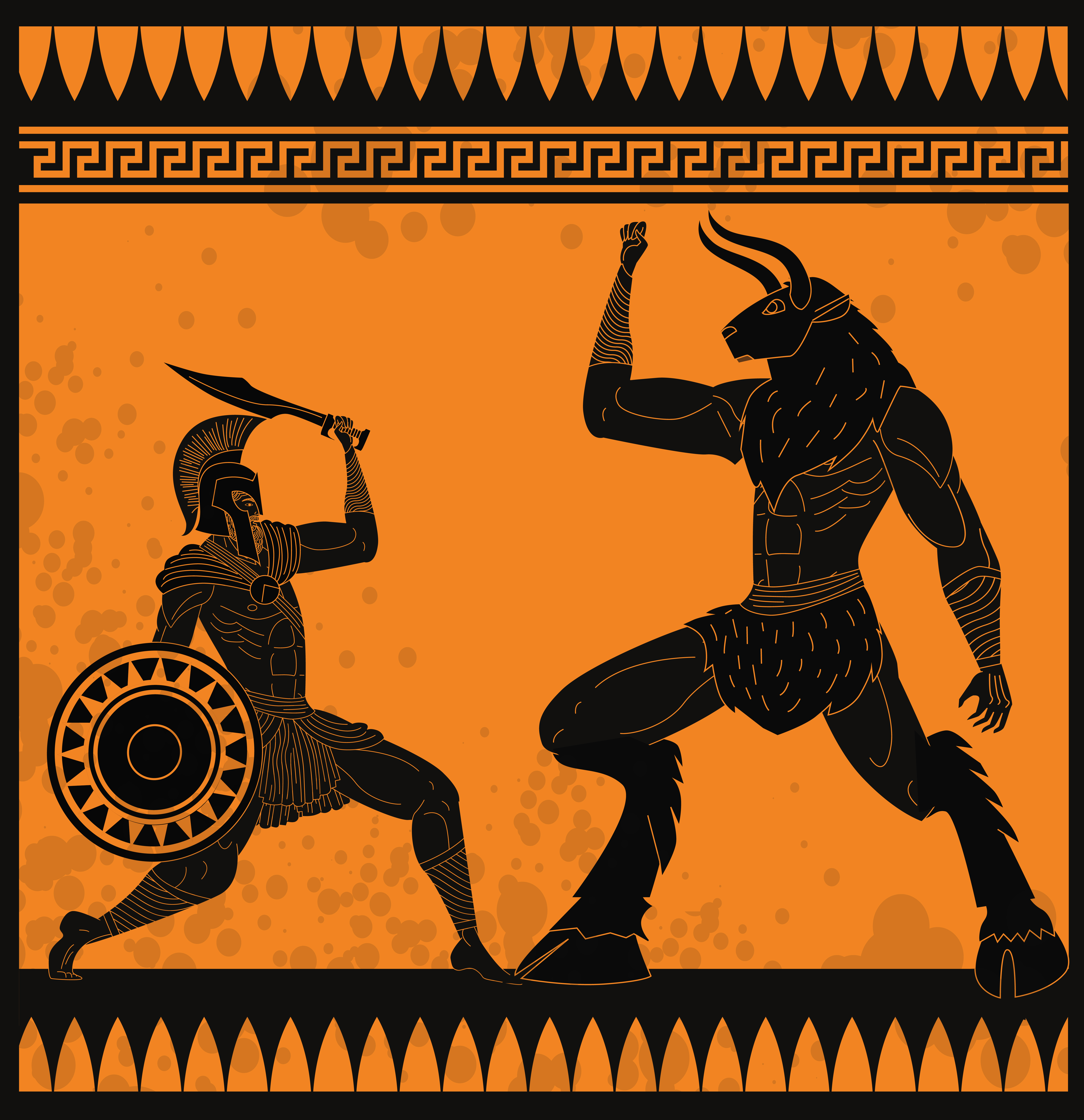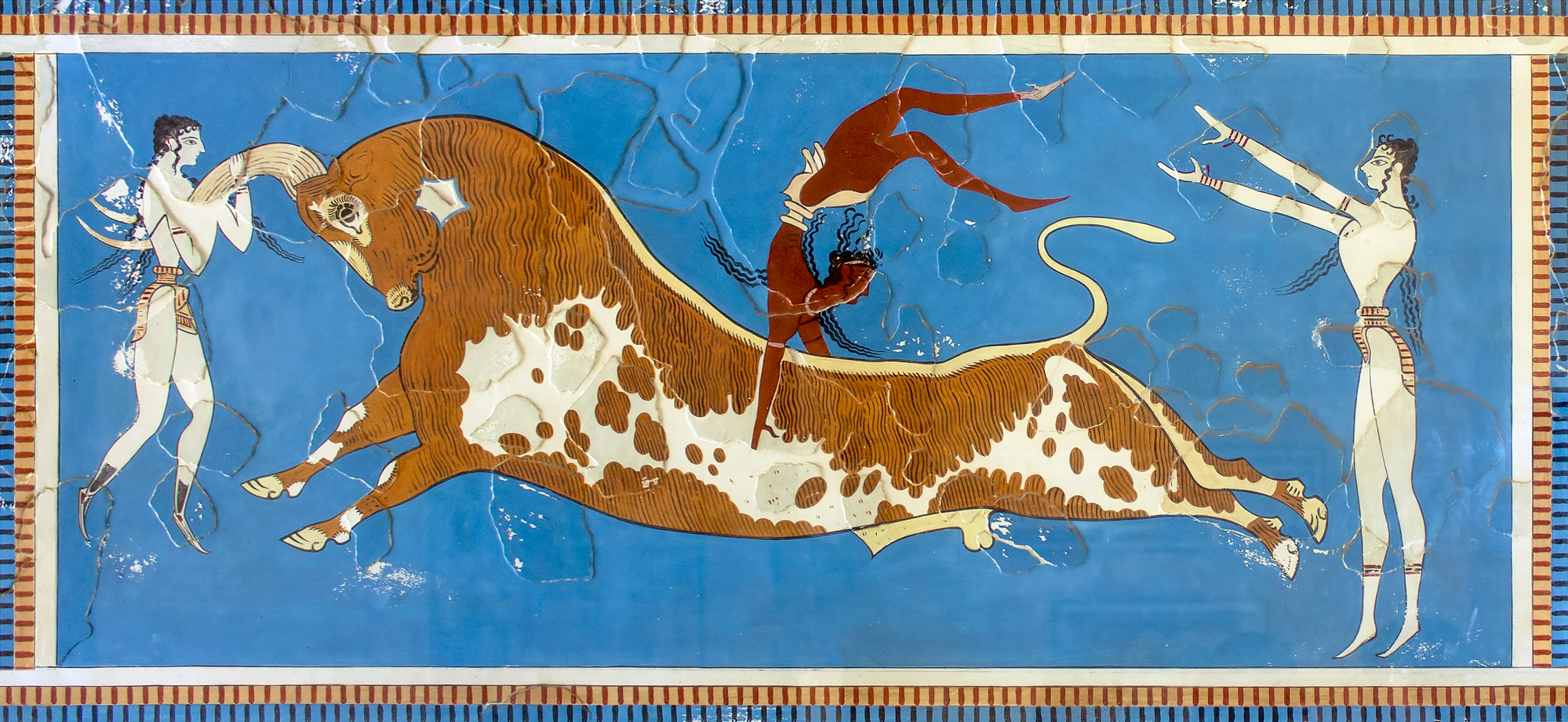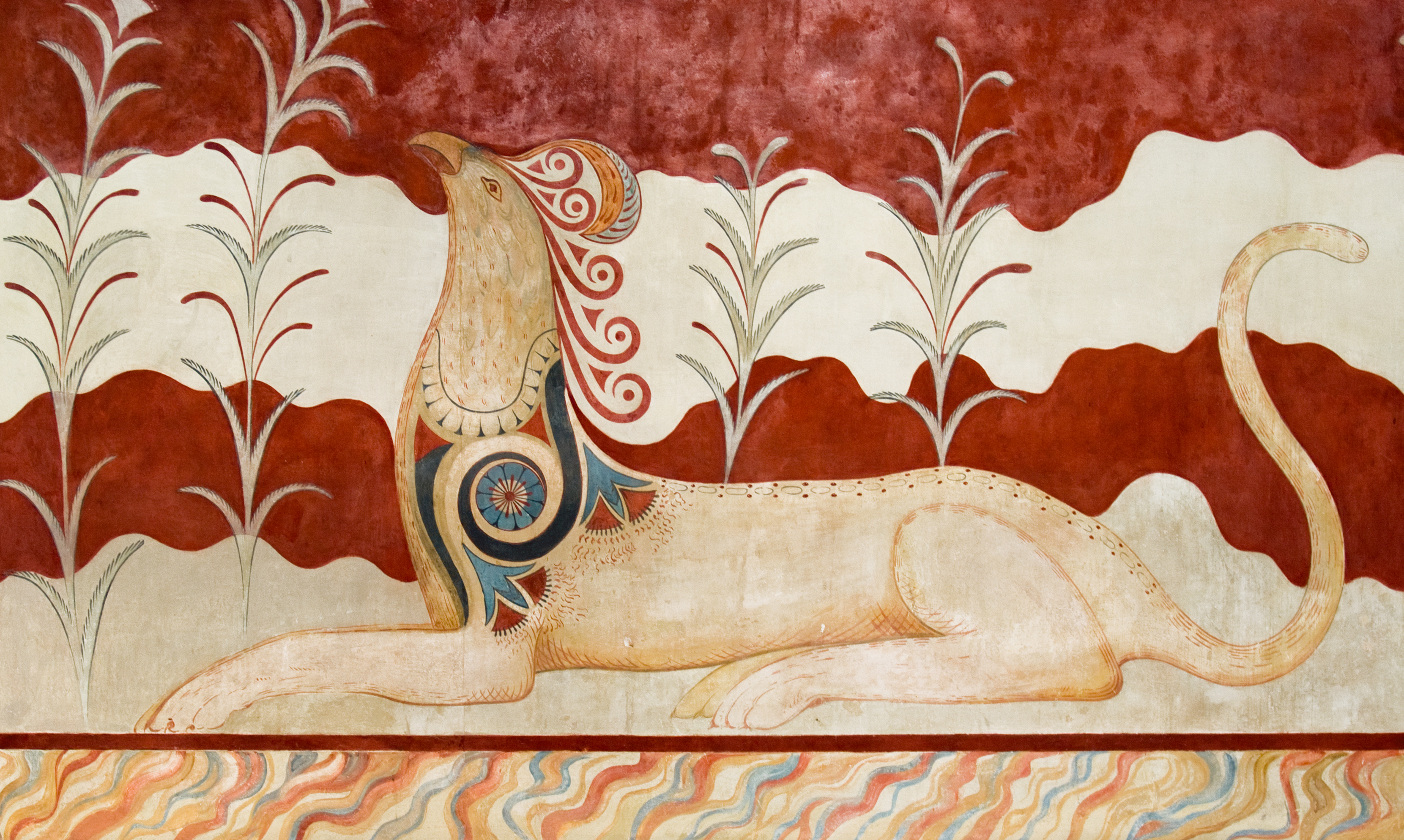Knossos is the ultimate destination for families curious about Greek mythology. On the site you will learn everything about the myths, legends and the life of the people eho lived in the famous palace of Knossos.
On the top of the Kefalos hill, next to the running waters of the river Kairatos, amongst olive trees and grapevines, there lies the archaeological site of the once glorious Knossos Palace. Its impressive and complex construction combined with its most interesting stories can certainly amaze and fascinate people of all ages, thus making it a perfect excursion for you and your children.
Here are a few stories and facts that will make your visit even more interesting and will help you travel back in time.
Myths & Legends of Knossos
King Minos & the abduction of Europe
So once upon a time, there lived a great king in Knossos called Minos. According to Greek Mythology, he and his younger siblings, Rhadamanthys and Sarpedon, were sons of the mighty god, Zeus, and the princess of Phoenecia, Europe. It all started on a sunny day when Europe and her friends ran to the fields, dancing and singing happily. Zeus who happened to be nearby fell in love with her beauty and turned himself into a strong and handsome bull in order to get closer to her. Europe was fascinated by the beautiful animal and decided to ride it. The moment she climbed on the bull, Zeus started running furiously, taking his new mistress with him. He then led her to the Dicteon Cave in Crete, where he was born and raised, and after taking back his original form, came into union with her. When it was time for Zeus to return to Mount Olympus, he entrusted Europe and their children to the king of Crete, Asterion, who became her second husband.

Abduction of Europe by Zeus, Statue at Agios Nikolaos, Crete - credits:sinenkiy/depositphotos
The Minotaur
When the time came for Minos to inherit the throne of Crete his brothers questioned his authority. Minos wanting to find a peaceful solution asked the Gods to send a sign of his sovereignty. He pleaded Poseidon, the god of the Sea, to send him a bull out of the Water, which he would sacrifice thanking the god for his help. And so it happened, but Minos was so struck by the animal’s beauty and strength that he kept it for breeding and sacrificed an ordinary bull instead. Poseidon was very angry with Minos’s greed and ingratitude and cast a love spell on his wife Pasiphae which made her fall madly in love with the divine Bull. From their union Minotaur was born. An otherworldly very strong creature, who had a man’s body and the head and tail of a Taurus.
After consulting the Oracle of Delphi, Minos asked the great architect Daedalus to build a structure to keep the Minotaur in. Thus, Daedalus built the famous Labyrinth, a very large maze, the centre of which was easy to reach but finding the way out was almost impossible.

Head of Minotaurus - credits:gilmanshin/depositphotos
Theseus & Ariadne
After some time, Minos’s son, Androgeus, was murdered by his jealous rivals in Athens, after completing very successfully the Panathenaic Games. To avenge his son’s death Minos declared a war on Athens and only agreed to stop the siege and return to peace if the Athenians were to send seven boys and seven girls every nine years to be sacrificed to the Minotaur who feasted upon human flesh. This continued until Theseus, son of King Aegeus of Athens, decided to join the quest in the hope that he would kill the beast and save his fellow citizens.
Upon his arrival to Crete, Theseus and the beautiful princess Ariadne, Minos’s daughter, fell instantly in love. Ariadne offered to help him and asked Daedalus for advice on how someone could exit the labyrinth. Daedalus then gave her a ball of thread which Theseus was to tie on the door entering the maze and follow it back to find his way out. He also revealed to her that in order for someone to reach the centre of the Labyrinth where the Minotaur lived, they would always have to walk straight forward, not turning neither left nor right at any point. Theseus did as he was told, found the beast and bravely killed it, thus freeing Athens from its bloody dept.
While returning to Athens he forgot to change the black sails of his ship into white ones, as he had promised his father he would if he had been successful and alive. As soon as Aegeus saw the black sails, he fell into despair thinking that his son was dead, dove of a cliff in Sounion and crashed into the deep blue sea that is since then called, the Aegean Sea.

Theseus against Minotaurus - credits:matintheworld/depositphotos
Daedalus & Icarus
Minos was very angry with Daedalus for helping Theseus and decided to lock him and his son Ikarus in the Labyrinth for life. Daedalus though, who was a very smart craftsman, designed two pairs of wings made of feathers and glued them together with wax. Before taking off, he strongly advised his son not to fly too close to the Sun as the wax would melt and he would crash into the Earth. Unfortunately, Icarus, taken over by his youth and arrogance, did not listen to his father and aimed to reach the highest skies. It was not long after, that his wings fell apart and he fell and died in the sea which became known as the Icarian Sea.
It is still not known whether the famous King of Crete, Minos, was just a mythical figure or if he really existed and was later gifted divine powers and origins by mythology writers that turned him into a legend. Still these are only a few myths about his life and many accomplishments have been attributed to his work. For example, it is said that he was the first Sea Emperor, as he freed the seas from pirates thus making the growth of trading possible. He was also considered one of the first and great legislators.
The history of Knossos though goes a long way back before its mythological roots and stories.
History & Antiquities of Knossos
According to findings the area of Knossos was first populated in 7000 BC, in the Neolithic period, and around 3500 BC, in the Bronze Age, its habitants developed a connection with the Cyclades Islands and Egypt. But it is not until 2600 BC that the Minoan Civilisation officially begins.
Its first period, from 2600 BC until 2000 BC, is called the Prepalatial Era, as the city consisted only of houses and no palace. In 2000 BC, in the Protopalatial Era, the first palace was built. It was destroyed in 1600 BC by a great earthquake, the focus of which is thought to have been Santorini. Although the great tsunami caused by the earthquake destroyed all the buildings and ships of the Heraklion coastline thus causing a huge damage to the Minoan Economy, the Minoans managed to rebuild the Palace, making it even more striking and architecturally impressive than before.
Thus started the final and most flourishing period of the Minoan Civilisation, the Neopalatial Era, which ended around 1450 BC to 1350 BC when once again an earthquake from Santorini stroke Knossos. Apart from the buildings collapsing, there was also a great fire which started from overturned olive oil barrels that lit up immediately. But this time the Palace was not rebuild. The Myceneans, taking advantage of the Minoans’ poor state at the time, rowed their ships to Crete, took over trading, which was the main economic force of the Minoans, and in this way took over power as well.
Although the city around the palace was slowly rebuilt and re-inhabited until the 9th century AC, the Mycenaeans were so puzzled by the complex structure of the Palace, which became even more complicated because of the earthquake ruins, that they did not care to rebuild it. It is said that this perception of theirs probably initiated the myth of the Labyrinth.
The palace was gradually covered in soil and forgotten until 1878 AC when Minoas Kalokairinos located and discovered it. The systematic excavation of its grounds took place in 1900 AC, by Sir Arthur Evans, an English archaeologist, and lasted until 1931 AC. He has been criticised by some experts firstly for taking the liberty to rebuild and replace missing parts of the buildings in the site and secondly, for using different materials than the original ones to do so. The excavations continue to this day.
Entering The Palace
Reaching the palace you will discover that it is not surrounded by a fort, like most palaces or castles are. This is great proof of the peace that prevailed and the king’s acceptance by his subjects, as he did not feel that he had to build a fort to protect himself. The Minoans were peaceful and hospitable people which obtained their wealth through trading. Upon entering Knossos, one cannot help but notice the characteristic Minoan Columns which were made of inverted cypress trees. These columns are not the original ones and had to be reconstructed as wood could not withstand the passage of time.
As we walk through the ruins, we’ll come across the beautiful Minoan Frescoes which give us a lot of information about the society and life of the Minoans. For example, men were painted having a dark skin while women had white, thus indicating that women were protected from the sun and it was only the men that were sent out to work in the fields. Women were also depicted wearing dresses which left their breasts uncovered, a sign of their freedom, and seating in the best seats near the king, which shows that they were highly regarded in the Minoan society.


